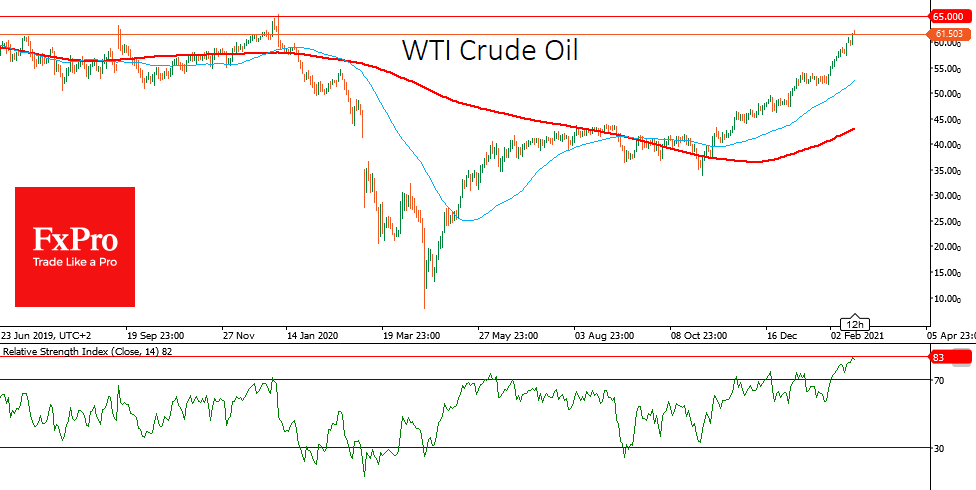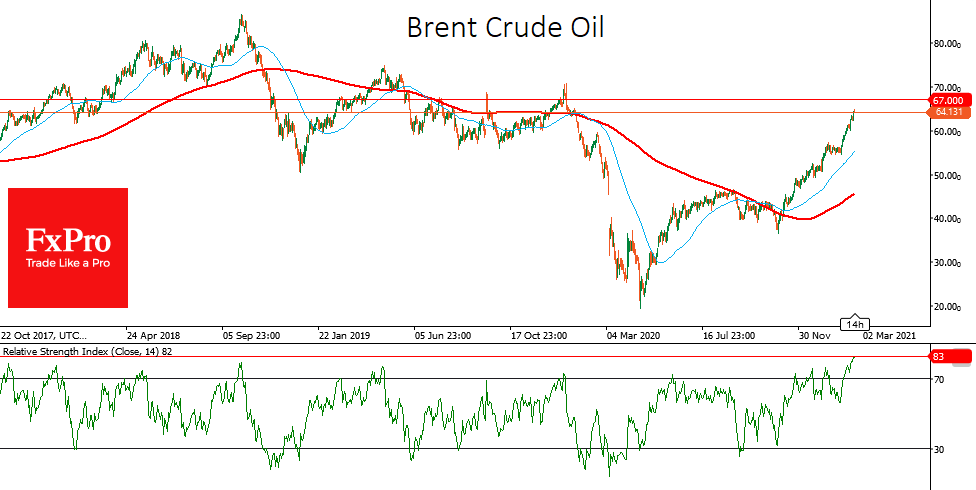Will the next short-squeeze take place on Oil?
February 18, 2021 @ 12:46 +03:00
Divergent stock market sentiment and gold’s drawdown have not stopped oil and gas from rising. The price of these energy resources has received a powerful driver in recent days with extreme weather conditions in the Northern Hemisphere.
According to Bloomberg estimates, heavy snowfall and freezing temperatures led to a 40% drop in oil production in the USA. The official report today should clarify last week’s production situation. However, reports of millions of Americans being left without energy while news of more factory and oil refinery shutdowns indicate that the problem is only worsening.

Separately, Europe reports a drop in storage reserves of up to 30%, close to the lower limit of comfortable levels for this time of year.
Right now, for oil and gas, the situation looks the exact opposite of what it was just under a year ago. The same can be said for the price movements of these exchange-traded instruments.
Back then the markets liquidated long positions en masse. Even speculators who were standing on purchasing in expectation of a price bounce relented in April because of the necessity to take physical delivery of oil.
This time, it is precisely the opposite. WTI quotations have added 77% in a dizzying rally since the beginning of November. Current levels near $62 are in the area of early 2020 highs. Prices have been turning down from this area since April 2019, which is well ahead of the coronavirus crisis.
However, sellers are forced to close their positions, forming a long “short-squeeze”. Those now betting on oil falling had previously retreated on the back of robust macroeconomic data.
This weekend, fears about the Iran-Saudi conflict have intensified on top of cold weather, causing energy demand to rise sharply and supply to fall.
Sellers set to take short positions at current levels should realise that the real short-squeeze is yet to come.

Fluctuations in the US and European grades are still very measured. Simultaneously, the signal for a market reversal could be a jump of several per cent beyond the established trading ranges and the boundaries of reasonable prices.
For WTI, the upper boundary would be in the area of $64-$65 versus $61.50. Brent is now trading at $64.50, with $67-$70 being the upper level. We need to keep our finger on the market’s pulse as Saudi Arabia and OPEC+ in general, could increase oil supplies very quickly or signal a normalisation of production in the coming months.
The FxPro Analyst Team







